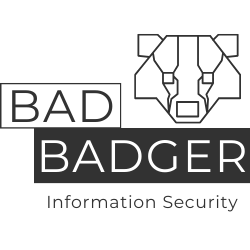I am an engineer by nature. I am technical down to my soul. My heart is not a fleshy pump but a contraption of gears and levers. My curiosity and need to understand the inner workings of all systems (and then how they can be broken), is the engine of how I work.
It’s important to know your essence – to be honest about it. Because flowing out of this will be all your most wonderful contributions that make the world a little better and brighter. It also will include your blindspots, shortcomings, and the idiosyncrasies that make everyone else bananas.
Too Clear
Sitting in the optometrist’s chair, he ran through the typical routine, “Number 1 or number 2? Number 3 or number 4?” Each time, the picture would become a little more in focus. Finally, unsure which option was the best, I just picked one.
“Number 4,” I said. He flipped to the next set of lenses and asked again.
“Um. Number 2? I’m not sure.” The picture had suddenly become much less clear.
“Ok. Let me back up,” he said, patiently.
“Ah. Yep. That’s better.”
“No problem. It was just too focused – too sharp,” he said.
That is often our problem. In our desire to ensure everyone has every detail, the message becomes too sharp. Too focused. Worse – if we’re honest, sometimes blasting every detail isn’t even about the audience. Sometimes it’s just about us running through it just out of our exuberance.
With my engineering nature, comes an utter excitement in going over the details. Digging into every facet of a project or tool gets me energized. However, while in some cases more detail may be necessary, it is critical that a leader keep the conversation short and focused on the main message. More detail can always be added later. However, the team must understand the mission and how the immediate task fits into achieving that objective. More effort must be spent on this, repeating and restating as much as is necessary, rather than pouring over what we may consider the “fun part”.
Keeping Things In Focus
Whether the message is going up or down the chain, getting the main message out and allowing the opportunity for them to ask clarifying questions is important. Not only does it keep your message sharp and professional, but if they ask questions, it reinforces the audience’s engagement.
My method for doing this, whether in a Powerpoint, email, or just in my notes, is to use a simple bulleted template.
- WHAT
- What is the core of your message? You need to keep this to NO MORE than two sentences. It needs to be brief and catchy like the message on a T-Shirt. If your WHAT is longer, the topic is too big for a single message. Thinking in terms of a shared problem is sometimes helpful.
- WHY
- Why should your audience care? This is an opportunity to engage their emotions. Note: this is not necessarily why you care. Emotional manipulation is not the goal either. But if your audience is being asked to engage in some way, they need to understand why it matters to them. Once again two (maybe three) sentences.
- DO
- The call to action. They understand what you’re saying, they understand why it matters, so now they need to understand in a single sentence, if at all possible, what you’re asking them to do
This simple format has saved my bacon countless times. Here is an example of how this might work:

Our WHAT states a shared problem, in clear language. Our WHY explains why they should care about the message. Our DO gives them a call to action that will help satisfy the shared need. Okay, it’s not a perfect example. But hopefully if gives an idea of what I’m getting at. Here’s a more technical and specific example that may come from an InfoSec leader:

So once again, while the message is technical, we have not drilled into all the details. We all know that more goes into the topic. Yet, the core message is clearly defined and can be recalled as discussions go on to ensure the task stays on target. The audience understands the essence of why this matters to them and what they must do.
Iterating
This process can be very difficult. Especially so when your audience is also engineers. They will want to drill down and form solutions. Good. We want them to be that way. But leaders of engineers must expend the extra effort to make the complex simple. Investing in forming that message ahead of time will pay dividends rapidly and distinguish you as a clear communicator.

